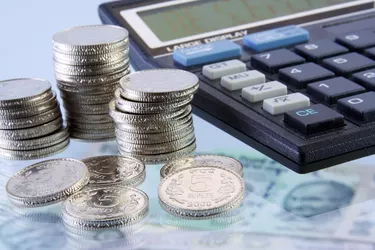
The basic causal relationship between the price level and the value of money is that as the price level goes up, the value of money goes down. The value of money refers to what a unit of money can buy, whereas the price level refers to the average of all of the prices of goods and services in a given economy.
Value of Money
Video of the Day
A unit of money has its denomination printed on it known as the face value, but the unit only has tangible value in relation to what a person can buy with it. This is called its purchasing power. If $1 can buy one muffin, two eggs or three pens, then the value of $1 = one muffin + two eggs + three pens. The purchasing power of a given currency changes over time due to variations in supply and demand, but in general, it slowly loses value as the price level rises.
Video of the Day
Price Level
In contrast to the value of money, which is expressed in units, such as $1, $20 and $100, the price level is an aggregate. Because it is difficult, confusing and nearly impossible to accurately average all prices for all goods and services in an economy, the price level is most commonly analyzed by finding the price of a theoretical collection of goods and services. The price level inevitably increases over time due to inflation, although in most economies, this increase is gradual.
Calculating the Price Level
In the United States, the price level is tracked through the Consumer Price Index. Statisticians working for the Bureau of Labor Statistics select a collection of goods and services that they assume an average American buys on a weekly basis, and they calculate the price of these items to determine the national price level and track price changes over time.
Relationship
As the price level increases over time, the value of money decreases. In most countries, the price level increases slowly with inflation and changes in supply and demand. In the U.S., the price level rises between 2 and 3 percent per year on average, doubling every 26 years. Thus, the amount of goods that $1 can buy slowly decreases every year and is halved every 26 years.
Over Time
Even though any currency loses purchasing power or value over time, economies are growing during this time, and wages adjust to increases in the price level. In fact, wage levels and gross domestic product -- the sum of goods and services sold in a national economy annually -- often increase faster than the price level.